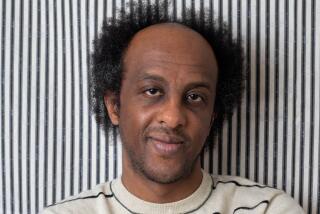Kathryn Scanlan remixes a found diary and T Fleischmann deconstructs a memoir
Writing is an act of transgression. At least it ought to be, if it aspires not to waste our time. “I can’t escape the language,” T Fleischmann declares in their magnificently uncategorizable “Time is the Thing a Body Moves Through,” “but that won’t stop me from refusing it anyway, and believing that a blank paper might transport me somewhere else.” Such a statement maps a territory of both refutation and affirmation, which is, of course, where literature lives.
We tell stories as a way to fix — in every meaning of the word — experience, and yet in the process, we cannot help but emphasize or frame. “My writing,” Maggie Nelson has acknowledged, “is riddled with such tics of uncertainty. I have no excuse or solution, save to allow myself the tremblings, then go back in later and slash them out. In this way I edit myself into a boldness that is neither native nor foreign to me.”
“My relationship to who I was is tenuous. Is this true of all people? This is why it seems important to me that all people ... practice their imaginations.”
— T Fleischmann
Nelson has praised Fleischmann’s work, but that’s not why I quote her here. Rather, there is something in her observation, its mix of vulnerability and assertion, that echoes how I want to read. I come to books not for answers but for questions — or perhaps more accurately to confront writers wrestling with themselves. Literature as performative, in other words, as much as narrative, which is what Nelson is addressing: that, in the reworking of scenes and sentences, we make something less “real” (whatever that means) than heightened, through which we are equally superseded and enlarged.
“In fact,” Kathryn Scanlan reveals in the brief “Note” that opens “Aug 9 — Fog,” which uses the recovered — and remixed — diary of an 86-year-old woman as a starting point, “I have possessed this work so thoroughly that the diarist has ceased to be an entirely unique, autonomous other to me. I don’t picture her. I am her.” Scanlan too is interested in transgression; the diary around which she builds her book belonged to a stranger and was “removed” from a box of unsold items at a public auction — whether by theft or appropriation remains unclear.
This ambiguity, or tension, informs both “Time is the Thing a Body Moves Through” and “Aug 9 — Fog.” The books are deeply personal while at the same time keeping us at arm’s length; they are circular but also move through time.
Blurred lines
Like Scanlan, Fleischmann relies on an external catalyst: the work of artist Félix González-Torres, who died in 1996 of AIDS. “In intention and execution,” Fleischmann writes, “his work is as driven by motors of dissent as by the mechanisms of beauty — / or rather the mechanisms of beauty as brilliant dissent.” This is a key point, not least because it also describes what Fleischmann is doing: creating a work that embodies its own identity in the fluidity of its lines.
Fleischmann is blurring all over the place, moving between prose and poetry (much of the material on González-Torres appears in the form of an unfinished verse work, interwoven with more narrative material), art criticism and memoir. Fleischmann is not only staking out but literally inventing a territory of their own. “My relationship to who I was is tenuous,” Fleischmann writes. “Is this true of all people? This is why it seems important to me that all people create, make art, practice their imaginations, exercise beauty.”
For Fleischmann, as for González-Torres, this means using the materials at hand. González-Torres built his installations out of common objects: light bulbs, candies. His 1991 work “Untitled (Orpheus, Twice)” features two large mirrors that reflect its viewers back upon themselves. It’s a vivid metaphor — or it would be, except that part of the point for Fleischmann is to walk away from metaphor in favor of the concrete. “I’ve been getting bored with metaphors anyway,” Fleischmann writes. “I’ve decided that I don’t like them because one thing is never another thing, and it’s a lie to say something is anything but itself.” What they’re referring to is the fallacy of category, the idea that we can be explained on terms other than our own.
“I’ve identified widely and inconsistently over time — bisexual, gay, dyke, trans, queer, genderqueer, nonbinary and so on,” Fleischmann told the Chicago alt-weekly New City in April. “After many years of stumbling around in that language, I finally came to understand that it was fine for none of those words to resonate with me and that I didn’t have to participate in that labelling if I didn’t want to, which was very freeing.” Such a sensibility sits at the heart of their book.
“Time is the Thing a Body Moves Through” calls itself an essay. But if that’s true enough — in the sense that the essay is meant to be capacious, to wander, to interrogate its content and its form — the designation ultimately reinforces the insufficiency of such tags to encapsulate the movement of an engaged body and mind.
Most essentially, “Time Is the Thing a Body Moves Through,” not unlike Fleischmann’s first book “Syzygy, Beauty,” effaces lines of genre as a strategy to efface, or disrupt, lines of self and gender. “There is a point, after all,” Fleischmann argues, “between apparition and body, / … [t]here is a point where a mirror looks back.”
Reflections of two selves
“Aug 9 — Fog” operates as a different sort of reflective surface — by turns, long distance and internalized. Its blurriness is less that of a single self than between two selves; the original (and, to us, anonymous) diarist and Scanlan as she rewrites a set of pathways through this other life. In her “Note,” she explains the origin of the project: “As I read, I typed out the sentences that caught my attention. Then, for ten years, I played with the sentences I’d pulled.” The process echoes, in a sense, that of the diary, which was “a Christmas present to the author from her daughter and son-in-law. … The diary chronicles the years 1968 through 1972.”
Rather than follow that chronology, Scanlan breaks the text into five seasonal sections: Winter, Spring, Summer, Fall and Winter again. The point, it seems, is continuity, which is suggested by that second Winter; the year may end but time goes on. It’s a way around the rigid demarcation of the diary, with its dated entries, its rootedness in the arcana of daily life.
Scanlan removes all that in favor of epigrammatic bursts of language, sometimes as few as four words on a page. “Fire whistle in nite. Steady rain at 8. He brought us some mush to fry,” reads one in its entirely. Two pages later: “D & Bucky going to see about head stones. She bought one. Seen 8 9 10 11 jets tonite, 2 airplanes & new moon while we were eating supper 6 to 6:45.”
I can’t stop looking at those cross-outs, which draw us back into the past as present (in the sense that we are literally watching as the diarist is counting) even as we must encounter them in retrospect. This, too, is what language bestows, the ability to freeze a moment as it is enacted, not so it can be re-created later but so we can recognize its evanescence, which establishes a bond between the diarist and ourselves. Call it empathy — which Fleischmann refers to as “a holy power” — or even more, transcendence. Either way, the effect is to eclipse the line between diarist and interpreter, interpreter and reader, until experience itself grows blurred.
If this sounds like one more mechanism of transgression, that is, of course, the whole idea. It’s a notion Scanlan makes explicit by appropriating a stranger’s diary, then builds on throughout the book, through the uneasiness her exposure of the diarist provokes. Is it a violation to use the woman’s language without knowledge or permission? Is it a violation to reconstruct, or reinvent, her words? These are not new questions; they inform precursor works such as Sophie Calle’s “The Address Book,” as they do, to greater or lesser extent, all personal narrative.
And yet, who do we reveal when we are writing? In the end, it can only be ourselves. “Sun shining then rainy but clearing,” Scanlan ends her version of the diary. And in those six unpunctuated words, the entire history of human perseverance is revealed.
::
“Time Is the Thing a Body Moves Through: An Essay”
T Fleischmann
Coffee House Press: 158 pp, $16.95 paper
::
Kathryn Scanlan
MCD/Farrar, Straus and Giroux: 110 pp, $18
Ulin is the author or editor of 10 books, including “Sidewalking: Coming to Terms with Los Angeles.” A 2015 Guggenheim fellow, he is a former book editor and book critic of The Times.
More to Read
Sign up for our Book Club newsletter
Get the latest news, events and more from the Los Angeles Times Book Club, and help us get L.A. reading and talking.
You may occasionally receive promotional content from the Los Angeles Times.









